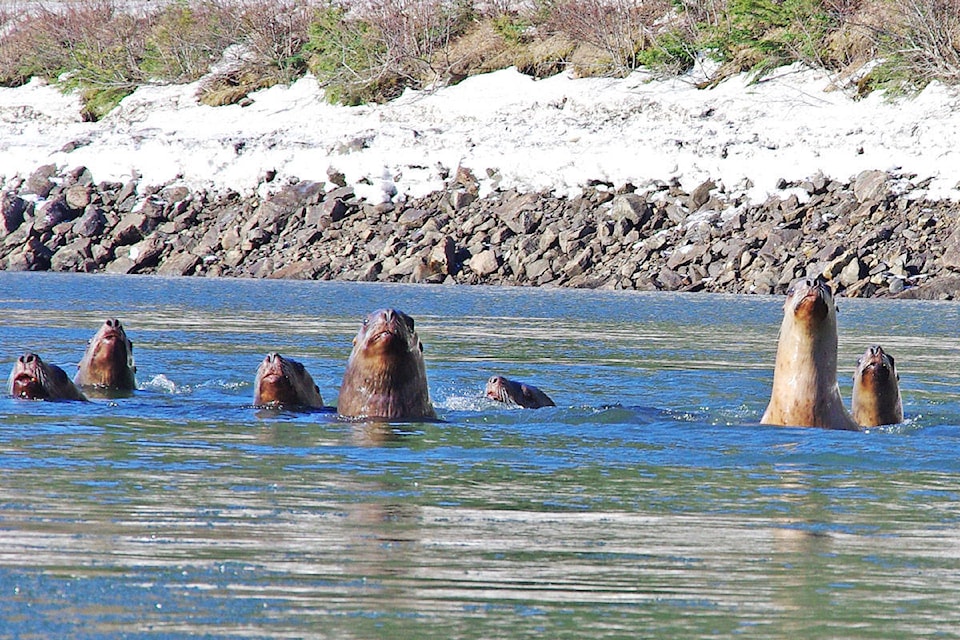Don Lambie is the first to admit he can be overly critical of the DFO.
So when the Telkwa angler, who has fished the Skeena River for more than 30 years, says he is impressed with their actions of late, it’s not a statement he’s making lightly.
Extremely low sockeye returns have prompted the Fisheries and Oceans Canada (DFO) to issue a number of conservation efforts in the area.
On July 27, the DFO issued a complete closure of recreational fishing for all salmon in the Skeena Watershed.
This is following a sockeye closure in Areas 4 and 5 for recreational anglers on July 11.
DFO also closed the Skeena River to all First Nations sockeye on July 29, with non-retention of sockeye and prohibitions for First Nations gillnet harvests of other species also in place in Area 4 and parts of 3 and 5.
READ MORE: DFO implements chinook restrictions for North Coast
Lambie says he feels the closures are good news, adding that, for the first time in a long time, he is seeing DFO officers patrolling the Skeena.
“Before they started the closure they were actively patrolling the Skeena, talking to sports fishers and letting them know about closures, updates — stuff like that — but the DFO has not been actively patrolling the Skeena for decades, so that was a good move.”
Despite the fact he loves the sport, Lambie said he understands the need to close salmon fishing due to lower-than-expected returns.
Mid-point Sockeye estimates for this season released by the DFO was just over 400,000 — narrowly meeting the threshold for a First Nations fishery but far below the 800,000 required for recreational.
However for all his praise, Lambie said he is still concerned DFO isn’t addressing an issue he feels is critical to salmon management in the area: seals.
Explaining the problem, he lays down some simple math about a seal population, which he said he has seen explode in his time fishing nearly every stream, lake and river in the Skeena watershed.
“I estimate there’s about 500 seals in the Skeena River, but lets go on a low estimate — say 200 seals — they’re eating a low average of two salmon per day so that’s 400 salmon a day times thirty, that’s [12,000 a month] on a low estimate.
“I’ve heard talk that they need to get a definitive amount of how many seals there are in the river which is a very difficult thing to do but as a person who has been on the river for [over 30] years … I know for a fact the seal population is devastating the salmon stocks.”
But Lambie has a solution: cull the seals.
He thinks DFO should work with local Indigenous groups and let them harvest the seals, adding the animals are relatively easy to retrieve if shot since they will float in the water.
He said the population is healthy enough that it could survive even an extreme culling in the Skeena.
“There’s no limit on what they could do, [they] could bag every seal they could find and it’s still not going to hurt the population because it’s overpopulated throughout the west coast.
READ MORE: Skeena closed to recreational sockeye
There is also the issue of a declining quality of habitats for salmon to spawn in, he noted, specifically pointing to the issue of beaver dams in the area.
Lambie said the DFO has used pipes placed through the dams at an intersecting angle to allow fish to cross these obstacles, but the issue is even this fix will eventually be instinctively plugged by the beavers.
He said he doesn’t like the idea of killing all these animals, but he feels it’s necessary for the salmon stocks to rebound.
“Up and down the Skeena drainage, especially on the lower end, most of the salmon habitat is gone,” he said.
“There’s streams that I’ve gone into where hundreds or maybe thousands of salmon spawned every year — they’re gone, they’re non-existent anymore, and that’s because of the beaver.”
But discussing all these separate issues Lambie notes unless the DFO can take a full-pronged approach and put boots on the ground to address all these varying issues facing populations, he feels simple closures will not bring the population back up to healthy levels.
And while he remains positive for now, he adds if the DFO tries to put nets in the water at the Skeena Tyee Test Fishery next year, he’ll be there to protest the action.
In an email to The Interior News DFO communications officer Dan Bate said they have no plans to authorize a large-scale cull of seals or sea lions in the area.
“DFO began conducting aerial surveys in British Columbia in the early 1970s to determine harbour seal and sea lion abundance and distribution, and monitor population trends. This work continues today,” the email reads.
“These species were depleted by over-hunting prior to the species being protected in 1970. Seal and sea lion populations then grew exponentially per year during the 1970s and 1980s, but growth rates began to slow in the 1990s for harbour seals, and the population now appears to have stabilized. Sea lion population continues to increase. Both species are believed to be at or slightly above historic norms.”
The email goes on to add DFO is currently reviewing a proposal from the Pactific Balance Pinnipeds Society to create a commercial fishery for pinnipeds under the DFO’s New and Emerging Fisheries Policy. Pinnipeds refer to the seal family. Bate said DFO is currently reviewing the proposal, but at this time there are no plans to authorize such a fishery.
“DFO takes an ecosystem-based approach to fisheries and oceans management to ensure that the best science is reflected, in consideration of the role seals and other marine and aquatic species play in sustaining a healthy and productive aquatic ecosystem.”
trevor.hewitt@interior-news.com
Like us on Facebook and follow us on Twitter
